Plants that Look like Aloe Vera But are Not
Aloe vera, renowned for its soothing properties and distinct appearance, has several botanical impostors in the plant kingdom. As we delve into the realm of plants resembling Aloe vera, the first contender to discuss is the Agave.
Agave
Botanical Name: Agave
Agave is a succulent that look like Aloe vera but are not, boasts sharp, spiky leaves that form an exquisite rosette pattern around a central stem. This succulent’s allure lies in its resemblance to Aloe vera, but it’s crucial to note the differences.
The leaves, ranging in colors from green to blue-green, contribute to the plant’s distinct appearance. To add variety to your garden, consider exploring different types of Agave plants.
Types of Agave Plants to Grow
- Agave americana
- Agave parryi
- Agave victoriae-reginae
Each type showcases unique features, from leaf patterns to sizes, allowing you to curate a diverse collection.

Buy Agave Plant –
Maguey Plant

Maguey is a type of succulent that looks like cactus and have aloe vera appearance but they are not aloe vera as there are so many thorns on edges of the leaves, it belongs to agave family that’s why it is so similar to aloe vera. The foliage color is gray-green or dark green with pointed tips. These succulents grow over 19 feet and its leaves resemble just like aloe vera leaves.
It is used in fencing for farming land where you see various cattle grazing. The succulent is easy to grow and if you water too much it can result in root rot which makes the leaves turn yellow or brown. If you are interested in growing maguey succulent then let me tell you it needs a bright spot as they don’t grow in direct sun so provide them with an indirect light area where they can thrive better.
Maguey is native to southwest America and Mexico and it is also known as century plant. Most of the species of this plant existed in Mexico about 75%. This succulent also stores water in its leaves for longer if days are hot it still survives using the leaves. It also supports medium to high temperatures so you don’t need to worry much about growing them in summers.
Buy Maguey Plant –
Zebra Cactus
Botanical Name: Haworthia
Zebra Cactus, adorned with distinct white stripes on its green body, captures attention as a small to medium-sized plant. While resembling Aloe vera, its unique patterns and characteristics set it apart.
To care for Zebra Cactus, consider the following:
- Indirect Light: Place Zebra Cactus in a location with indirect sunlight.
- Minimal Watering: Allow the soil to dry between waterings to prevent root rot.
- Well-Draining Soil: Use a succulent mix for optimal growth.
By incorporating these practices, you ensure the health and longevity of your Zebra Cactus.
Different Types of Zebra Plant Varieties
- Haworthia attenuata
- Haworthia fasciata
Exploring these varieties allows you to appreciate the diversity within the Zebra Cactus family.
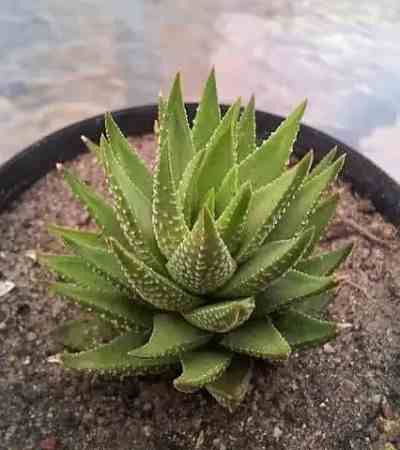
Buy Zebra Cactus –
Yucca
Botanical Name: Yucca
Yucca, with its rosette of spiky leaves resembling Aloe vera, establishes itself as a robust and drought-tolerant alternative. Thriving in diverse climates, Yucca’s adaptability makes it a valuable addition to various garden settings.
To cultivate Yucca successfully, consider the following:
- Well-Draining Soil: Use a sandy, well-draining soil mix for optimal growth.
- Adequate Sunlight: Yucca thrives in full sunlight, ensuring healthy foliage.
- Minimal Watering: Allow the soil to dry completely between waterings to prevent root issues.
Incorporating Yucca into your garden not only adds visual interest but also contributes to a resilient and low-maintenance landscape.
Succulents With Long Stems
- Sempervivum ‘Red Rubin’
- Sedum morganianum (Donkey Tail)
Exploring succulents with long stems allows you to diversify your collection, introducing different textures and growth habits.
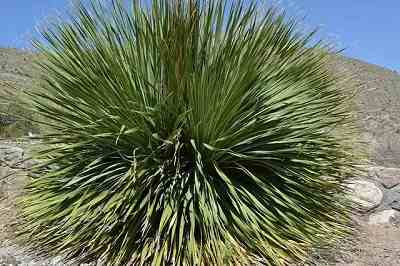
Buy Yucca Plant –
Ox Tongue Plant
Botanical Name: Gasteria
The Ox Tongue Plant, with its thick, fleshy leaves and vibrant flowers, emerges as a remarkable Aloe vera alternative. Its rosette pattern and greenery contribute to a visually pleasing display.
To cultivate Ox Tongue Plants successfully, consider the following steps:
- Moderate Light: Provide indirect sunlight to prevent leaf burn.
- Well-Draining Soil: Use a cactus mix or add perlite to ensure proper drainage.
- Watering Guidelines: Allow the soil to dry between waterings to prevent root rot.
By following these guidelines, you create an ideal environment for the thriving growth of Ox Tongue Plants.
Unique Varieties of Gasteria
- Gasteria ‘Little Warty’
- Gasteria ‘Flow’
Exploring these varieties allows you to diversify your collection, introducing unique textures and colors.
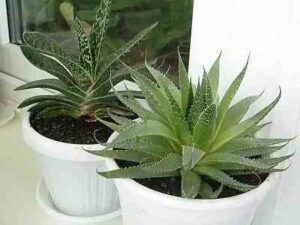
Buy Gasteria Plant –
Pineapple Plant
Botanical Name: Ananas comosus
The Pineapple Plant, with its spiky and elongated leaves, presents an intriguing resemblance to Aloe vera. Beyond its appearance, the Pineapple Plant also produces a fruiting structure reminiscent of its namesake.
To cultivate Pineapple Plants successfully, follow these steps:
- Warm Environment: Ensure a consistently warm environment for optimal growth.
- Provide Adequate Light: Place Pineapple Plants in a location with bright, indirect sunlight.
- Moderate Watering: Maintain a consistent watering schedule, allowing the soil to dry between waterings.
By following these guidelines, you encourage the growth of healthy Pineapple Plants in your garden.
What is Pink Pineapple and How to Grow It
- Understanding the Unique Characteristics
- Steps for Growing Pink Pineapple Successfully
Exploring the world of Pink Pineapple introduces a delightful twist to your gardening endeavors.
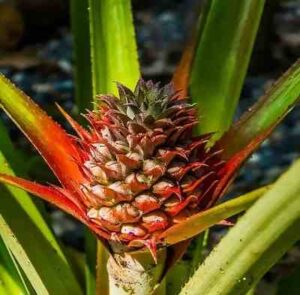
Buy Young Pineapple Plant –
Dryland Bromeliads
Botanical Name: Bromeliaceae
Dryland Bromeliads, known for their spiky, colorful foliage, are an enticing addition to the roster of Aloe vera look-alikes. Ranging in colors from vibrant green to fiery red, these bromeliads bring a touch of the exotic to your garden.
To cultivate these captivating plants successfully, consider the following steps:
- Choose Well-Draining Soil: Provide a well-draining mix to prevent waterlogging.
- Optimal Light Conditions: Place the bromeliads in bright, indirect light for optimal growth.
- Watering Schedule: Maintain a moderate watering schedule, allowing the soil to dry slightly between waterings.
By adhering to these guidelines, you ensure the thriving growth of your Dryland Bromeliads.
Best Bromeliads for Indoor Growth
- Neoregalia ‘Fireball’
- Aechmea ‘Blue Rain’
Exploring indoor-friendly bromeliads expands your options, allowing you to enjoy their beauty year-round.
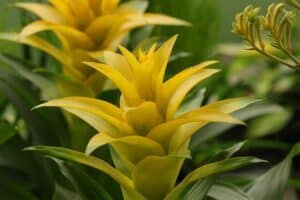
Buy Dryland bromeliads Plant –
Ariocarpus
Botanical Name: Ariocarpus
Ariocarpus, a small cactus with a flattened shape, joins the ranks of Aloe vera look-alikes. The body of the cactus, usually green or gray-green, is adorned with a small number of ribs running vertically along its structure.
To distinguish Ariocarpus from Aloe vera, observe its compact size and unique rib arrangement. This succulent adds a charming touch to arid landscapes or succulent gardens.
Bergeranthus
Botanical Name: Bergeranthus scapiger
The Bergeranthus, a low-growing succulent forming a rosette of leaves, presents another intriguing alternative to Aloe vera. While its leaves are typically green, variations with red or purple tints may also captivate enthusiasts.
Understanding the distinct characteristics of Bergeranthus allows you to appreciate its aesthetic value and incorporate it harmoniously into your garden.
Unique Varieties of Bergeranthus
- Bergeranthus scapiger ‘Green Majesty’
- Bergeranthus scapiger ‘Royal Ruby’
Exploring these varieties unveils a spectrum of colors, enhancing the visual appeal of your succulent collection.
Bergeranthus plant
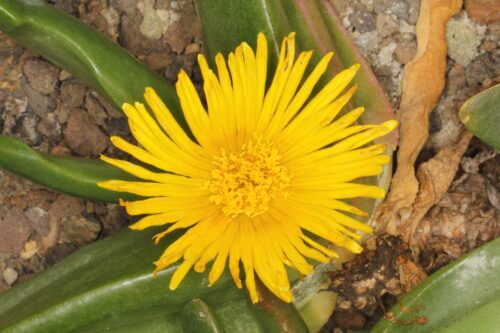
Flowers of the genus Bergeranthus (family Aizoaceae) are known for their striking beauty and hardiness. The species has adapted to the arid, low-moisture conditions of the Eastern Cape of South Africa, where it flourishes during the spring and autumn rainy seasons.
Succulent Bergeranthus multiceps, or “many-headed Bergeranthus,” grows as a compact cluster of suberect, tapering leaves. These lovely plants may attain a height of 15 cm and a width of around 8 cm. Because of their cute look, they are great for use in miniature gardens or succulent collections.
Tips for Maintaining Your Bergeranthus Multiceps
These Bergeranthus multiceps care instructions will help you keep your plant healthy and vigorous:
- These succulents thrive best in well-draining soil, since standing water may cause root rot. You may also use a combination of ordinary potting soil and either sand or perlite.
- Because of its adaptations, Bergeranthus multiceps only needs moderate watering. To avoid overwatering the soil, let it dry up entirely in between waterings.
- Changes in Climate It may be necessary to alter your watering regimen according to the seasons. Water less during wet periods and more when dry ones arrive.
- Your Bergeranthus multiceps will thrive with plenty of direct sunshine. They do well in exposed, sunny locations.
- If you live in a region where frost is common, take precautions to keep your succulents safe throughout the winter. The fungus Bergeranthus multiceps is not hardy in cold climates.
Additionally, Bergeranthus scapiger, sometimes known as the “thick-leaved Bergeranthus,” is a beautiful species within this genus. This evergreen succulent may reach a height of 60 mm to 150 mm and has a broad, meaty rootstock that protrudes from the ground.
Tiger Jaws
Botanical Name: Faucaria
Tiger Jaws, with its unique tiger-like pattern on green leaves, stands out as a captivating alternative to Aloe vera. Some varieties may even display red or yellow tints, enhancing their visual appeal.
To incorporate Tiger Jaws into your collection, follow these steps:
- Provide Well-Draining Soil: Mimic their native arid conditions for optimal growth.
- Moderate Watering: Allow the soil to dry between waterings to prevent root rot.
- Ample Sunlight: Place Tiger Jaws in a location with plenty of sunlight to encourage vibrant coloration.
By adhering to these guidelines, you ensure the health and vibrancy of your Tiger Jaws succulents.
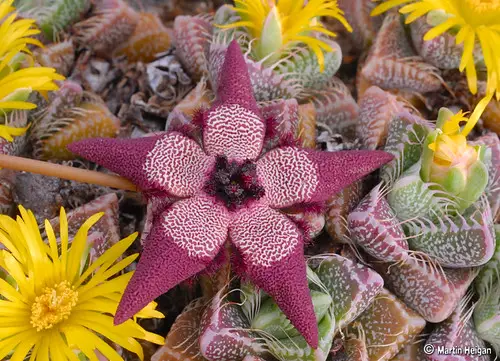
Hechtia
Botanical Name: Hechtia
Hechtia, with rosettes of stiff leaves typically in green or gray-green hues, offers a captivating alternative to Aloe vera. Its unique appearance and adaptability make it a desirable addition to succulent collections.
To cultivate Hechtia successfully, consider the following:
- Provide Adequate Sunlight: Place Hechtia in a location with ample sunlight.
- Well-Draining Soil: Use a mix suitable for succulents to prevent waterlogging.
- Infrequent Watering: Allow the soil to dry between waterings to prevent root issues.
By adhering to these guidelines, you ensure the thriving growth of Hechtia in your garden.

Snake Plant
Botanical Name: Dracaena trifasciata
The Snake Plant, with its long, strappy leaves arranged in a rosette pattern, emerges as a beautiful alternative to Aloe vera. While distinct in appearance, the Snake Plant shares a similar appeal as an indoor plant.
To care for Snake Plants, consider the following:
- Low Light Tolerance: Thrives in low-light conditions, making it suitable for various indoor spaces.
- Infrequent Watering: Resilient to drought, allowing for less frequent watering.
- Air Purification: Known for its air-purifying qualities, enhancing indoor air quality.
Incorporating Snake Plants into your indoor spaces not only adds greenery but also contributes to a healthier living environment.
Best Tall Snake Plant Varieties
- Sansevieria trifasciata ‘Laurentii’
- Sansevieria trifasciata ‘Moonshine’
Exploring tall Snake Plant varieties allows you to create dynamic displays and focal points in your home.
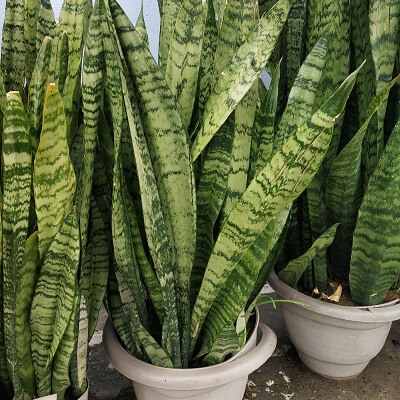
Carrion Flower
Botanical Name: Stapelia
The Carrion Flower, with its thick, fleshy leaves resembling Aloe, takes on a unique characteristic—its strong and unpleasant smell. While sharing visual similarities, the Carrion Flower stands out with its distinct olfactory feature.
To incorporate Carrion Flower into your collection, consider the following:
- Outdoor Cultivation: Thrives in outdoor settings with well-draining soil.
- Pollinator Attraction: The unpleasant smell attracts flies, serving as a natural pollination mechanism.
- Flowering Patterns: Unique and intricate flower patterns enhance the visual appeal.
Understanding the peculiarities of Carrion Flower allows you to appreciate its role in both visual and olfactory aspects of your garden.
Best Flowering Cactus Plants
- Stapelia gigantea
- Stapelia variegata
Exploring these flowering cactus plants adds diversity to your garden, combining unique visual elements with captivating blooms.
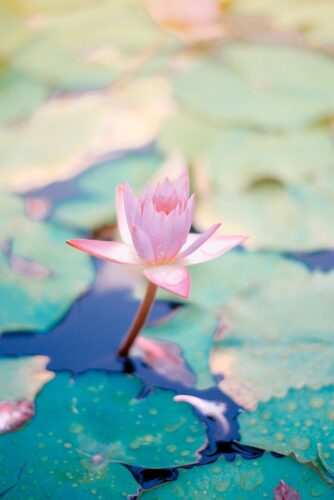
Red Hot Poker Aloe
Botanical Name: Aloe Aculeata
The Red Hot Poker Aloe earns its name with spikes of red leaves resembling both Aloe and the red hot poker plant. As a hybrid, it presents a unique combination of characteristics, adding flair to succulent collections.
To cultivate Red Hot Poker Aloe successfully, consider the following:
- Sun Requirements: Flourishes in full sunlight, enhancing the intensity of its red hues.
- Moderate Watering: Adaptable to dry conditions, requiring infrequent watering.
- Container Gardening: Ideal for containers, allowing for versatility in placement.
Incorporating Red Hot Poker Aloe into your garden or indoor spaces introduces a dynamic element, capturing attention with its vibrant colors.
Beautiful Succulents that Look Like Roses
- Echeveria ‘Lola’
- Graptopetalum paraguayense (Ghost Plant)
Exploring succulents with rose-like appearances adds a romantic and elegant touch to your garden or succulent collection.
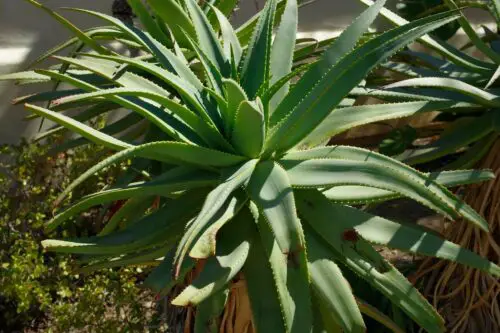
American Century Plant
Botanical Name: Maguey
The American Century Plant, with its large rosette of leaves, stands tall, reaching heights of 6-8 feet. Beyond its size, this plant boasts a captivating presence, making it a prominent choice for landscapes.
To incorporate the American Century Plant into your garden, consider the following:
- Spacious Settings: Due to its size, plant in areas with ample space for unrestricted growth.
- Drought Tolerance: Adapts well to dry conditions, requiring minimal watering.
- Distinctive Appearance: Large leaves with pointed tips contribute to its unique visual appeal.
Understanding the characteristics of the American Century Plant allows you to make informed decisions when incorporating it into your landscape.
Beautiful Succulents that Look Like Roses
- Echeveria ‘Lola’
- Graptopetalum paraguayense (Ghost Plant)
Exploring succulents with rose-like appearances adds a romantic and elegant touch to your garden or succulent collection.
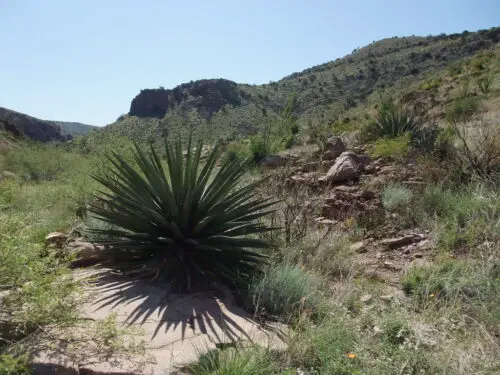
Uitenhage Aloe
Botanical Name: Aloe Africana
The Uitenhage Aloe, with its large, thick, fleshy leaves, emerges as another contender among plants resembling Aloe vera. Capable of reaching heights of up to 2 feet, this succulent exhibits a robust and visually striking presence.
To cultivate Uitenhage Aloe successfully, consider the following:
- Well-Draining Soil: Use a succulent or cactus mix for optimal growth.
- Adequate Sunlight: Place in a location with plenty of sunlight for vibrant colors.
- Minimal Watering: Allow the soil to dry between waterings to prevent root rot.
Incorporating Uitenhage Aloe into your garden introduces a bold and resilient succulent, enhancing the overall aesthetics.
Best Aloe Varieties For Containers
- Aloe brevifolia
- Aloe ‘Snowstorm’
Exploring Aloe varieties suitable for containers allows you to create dynamic displays in limited spaces.
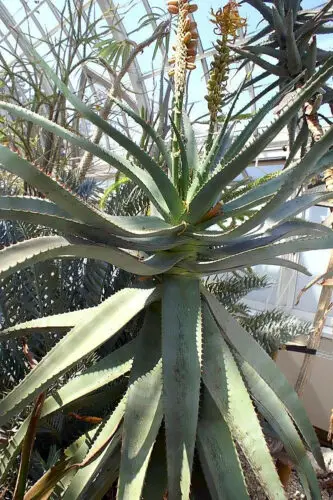

Sansevieria Hybrid
Botanical Name: Sansevieria Francissi
Native to tropical Africa, the Sansevieria Hybrid with its long, strappy leaves and stunning appearance serves as a remarkable Aloe alternative. Commonly known as the Whale Fin Sansevieria, this hybrid brings an element of grace to indoor spaces.
To care for Sansevieria Hybrid, consider the following:
- Low Light Tolerance: Thrives in low-light conditions, making it suitable for various indoor environments.
- Infrequent Watering: Resilient to drought, requiring minimal watering.
- Air Purification: Known for its air-purifying qualities, contributing to a healthier indoor atmosphere.
Incorporating Sansevieria Hybrid into your living spaces not only adds a touch of elegance but also promotes better air quality.
Whale Fin Sansevieria Care
- Light Requirements: Place in areas with indirect light to maintain leaf coloration.
- Watering Guidelines: Allow the soil to dry between waterings, avoiding waterlogged conditions.
- Container Selection: Choose a well-draining container to prevent overwatering issues.
By following these care guidelines, you ensure the optimal health and growth of your Whale Fin Sansevieria.
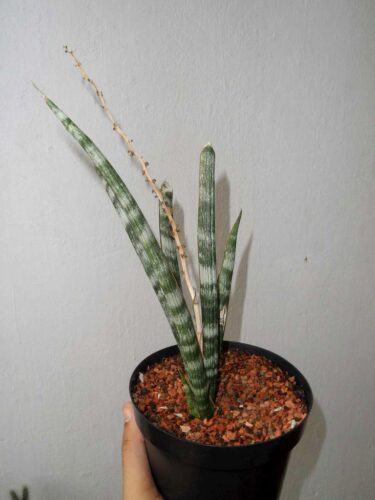
Sawblade Plant
Botanical Name: Dyckia
The Sawblade Plant, with its saw-like edges on Aloe-like leaves, adds a spiky and alluring element to succulent collections. Its unique appearance and hardy nature make it a desirable choice for enthusiasts seeking distinct varieties.
To cultivate Sawblade Plants successfully, consider the following:
- Well-Draining Soil: Use a succulent or cactus mix to prevent waterlogging.
- Bright Light: Place in a location with ample sunlight to encourage robust growth.
- Minimal Watering: Allow the soil to dry between waterings to prevent root issues.
Incorporating Sawblade Plants into your garden introduces texture and visual interest, creating dynamic compositions.
Unique Varieties of Dyckia
- Dyckia ‘Red Devil’
- Dyckia ‘Cherry Coke’
Exploring these unique varieties allows you to appreciate the diversity within the Dyckia genus, each offering distinct colors and characteristics.
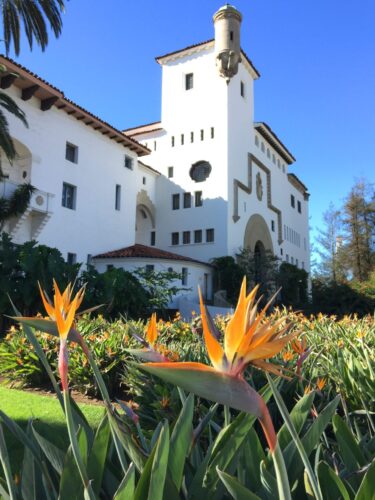
Whale’s Tongue Agave
Botanical Name: Agave ovatifolia
For those seeking one of the most massive Aloe vera alternatives, the Whale’s Tongue Agave is an excellent choice. With a large rosette of leaves and a unique shape resembling a whale’s tongue, this agave commands attention in any landscape.
To incorporate Whale’s Tongue Agave successfully, consider the following:
- Space Considerations: Due to its size, plant in areas with ample space for unrestricted growth.
- Drought Tolerance: Adapts well to dry conditions, requiring minimal watering.
- Distinctive Appearance: Large leaves with a unique shape contribute to its visual appeal.
Understanding the characteristics of Whale’s Tongue Agave allows you to make informed decisions when integrating it into your landscape.
Notable Agave Varieties
- Agave ovatifolia ‘Frosty Blue’
- Agave ovatifolia ‘Vanzie’
Exploring different Agave varieties expands your options, introducing variations in color, size, and leaf patterns.
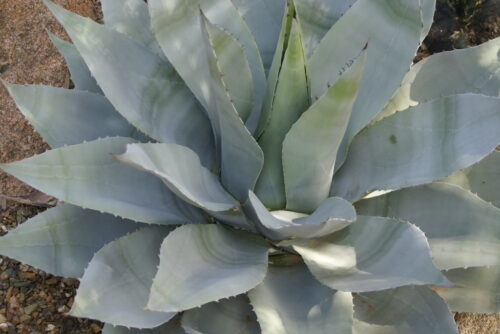
Related Questions
Outdoor Plants that Look Like Aloe Vera
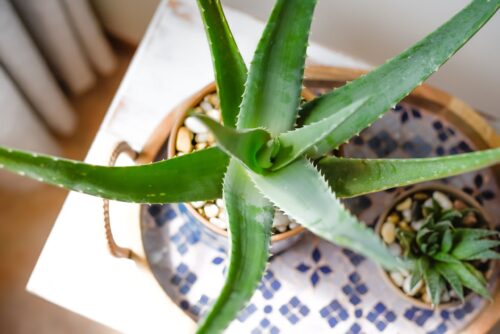
Outdoor spaces can be adorned with a variety of plants that share a striking resemblance to Aloe vera. One notable example is the Agave. With its spiky leaves arranged in a rosette pattern, Agave adds a touch of sophistication to gardens and landscapes. The diversity within the Agave genus provides options for varying sizes, colors, and leaf patterns.
- Ariocarpus: A small cactus with a flattened shape, Ariocarpus thrives in arid outdoor environments. Its unique ribbed structure and green or gray-green color make it an intriguing addition.
- Bergeranthus: This low-growing succulent forms rosettes of leaves, creating a charming display in outdoor gardens. With green or tinted leaves, Bergeranthus introduces diversity to succulent collections.
- Dryland Bromeliads: Known for their spiky and colorful foliage, Dryland Bromeliads contribute vibrant hues to outdoor spaces. From green to red, these bromeliads add an exotic touch to garden landscapes.
Indoor Plants that Look Like Aloe Vera
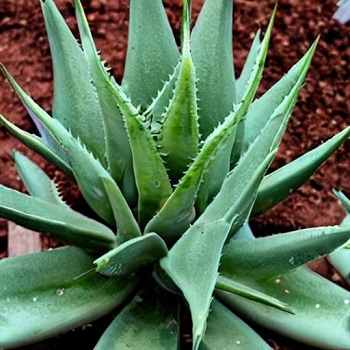
When it comes to indoor spaces, the Snake Plant (Sansevieria trifasciata) emerges as a prominent houseplant resembling Aloe vera. With its long, strappy leaves forming a rosette pattern, the Snake Plant not only adds greenery to indoor environments but also thrives in low-light conditions.
- Zebra Cactus (Haworthia): Ideal for windowsills and indoor containers, the Zebra Cactus features distinct white stripes on its green body. Its small to medium size makes it a versatile choice for indoor spaces.
- Sansevieria Hybrid (Whale Fin Sansevieria): This hybrid plant, native to tropical Africa, showcases long, strappy leaves and an elegant appearance. Its adaptability to low-light conditions makes it an excellent indoor companion.
Poisonous Plants that Look Like Aloe Vera
While exploring plants resembling Aloe vera, it’s crucial to be aware of potentially toxic alternatives. One such example is the Euphorbia tirucalli (Pencil Cactus). Recognized by its milky sap, this plant can cause skin irritation and harm if ingested. Safety precautions, such as wearing gloves, are essential when handling this toxic look-alike.
- Haworthiopsis attenuata (Zebra Plant): While mildly toxic if ingested, the Zebra Plant may cause discomfort. Keeping it out of reach of children and pets and practicing proper hand hygiene after handling are essential safety measures.
- Dyckia (Sawblade Plant): This spiky succulent, while visually appealing, requires careful handling due to its potential for skin irritation. Well-draining soil and minimal watering contribute to a safe cultivation environment.
Large Plant that Looks Like Aloe Vera

For those seeking a large plant resembling Aloe vera, the American Century Plant (Maguey) stands out. With a rosette of leaves reaching heights of 6-8 feet, this plant commands attention in spacious outdoor landscapes.
- Space Considerations: Due to its size, plant the American Century Plant in areas with ample space for unrestricted growth.
- Drought Tolerance: Adapted to dry conditions, this plant requires minimal watering, contributing to its resilience.
- Distinctive Appearance: Large leaves with pointed tips enhance its unique visual appeal, making it a focal point in larger garden settings.
Plant that Looks Like Aloe with Spikes
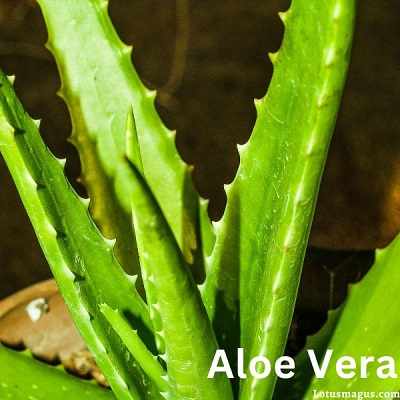
For those drawn to Aloe vera’s spiky charm, several alternatives exhibit similar features. The Red Hot Poker Aloe (Aloe Aculeata), with spikes of red leaves, provides a visually striking option.
- Sun Requirements: Flourishing in full sunlight enhances the intensity of its red hues, making proper placement crucial.
- Moderate Watering: Adaptable to dry conditions, the Red Hot Poker Aloe requires infrequent watering for optimal growth.
- Container Gardening: Ideal for containers, this allows for versatility in placement, adding a touch of vibrancy to patios or decks.
Frequently Asked Questions (FAQs) on plants that look like aloe vera
As we unravel the world of flora equivalent to Aloe vera, it is natural to have questions. Let’s cope with a few not unusual queries to decorate your information and guide you in making informed choices in your lawn.
What’s Similar to Aloe Vera?
Plants with a resemblance to Aloe vera proportion sure characteristics, together with rosette patterns, spiky leaves, and vibrant colorings. Some great examples include Agave, Haworthia, and Gasteria. These plant life offer a comparable aesthetic but might also vary in length, color, and increase conduct.
What Houseplant Looks Like Aloe Vera?
The Snake Plant (Sansevieria trifasciata) sticks out as a distinguished houseplant that resembles Aloe vera. With its lengthy, strappy leaves arranged in a rosette sample, the Snake Plant adds a touch of greenery to indoor areas. It’s recognized for its resilience, making it appropriate for various indoor environments.
What is the Mexican Plant that Looks Like Aloe Vera?
The Agave (Agave) is a Mexican plant that carefully resembles Aloe vera. Known for its spiky leaves arranged in a rosette pattern, Agave is available in various species and sizes. It prospers in arid conditions, making it properly-ideal for Mexican landscapes and gardens.
What is the Yucca Plant that Looks Like Aloe Vera?
The Yucca (Yucca) is a plant that stocks visual similarities with Aloe vera. With its rosette of spiky leaves, Yucca provides a drought-tolerant opportunity. The Yucca plant comes in distinct species, each with its unique traits, adding diversity to gardens.
Conclusion
Exploring flora that look like Aloe vera opens a international of opportunities for garden fans. From the spiky charm of Agave to the stylish presence of Sansevieria, every alternative brings its particular charm. Whether you choose outside or indoor sorts, expertise their care requirements ensures a thriving and visually fascinating garden. However, it is essential to take into account of capability poisonous appearance-alikes and take necessary precautions. By embracing the diversity in the plant kingdom, you may curate a lawn that no longer most effective delights the eyes but also contributes to a harmonious and vibrant out of doors or indoor surroundings.
